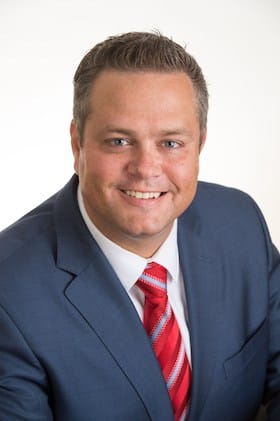Photo credit: Depositphotos
By Nick Westfall, President & CEO, VITAS Healthcare
For too long, advance care planning (ACP) has been treated as a healthcare afterthought or one-time event in the care continuum for patients with serious diagnoses or advanced illnesses.
Yet recent events and trends in healthcare make it abundantly clear that these valuable discussions between physicians and their patients about goals and values for medical care should be ongoing, recurring activities. For that to happen, physicians must embrace ACP as an essential skill and ongoing component of care protocols and office practices.
No matter the underlying illness, ACP examines facts, explores options for medical care, and uncovers patients’ preferences and emotions about the care they want as their diagnosis changes and their prognosis worsens. Ideally, ACP should be undertaken while patients are healthy and certainly before—or as soon as—they are diagnosed with chronic or serious illnesses, rushed to an emergency room, or admitted into an intensive care unit.
Most importantly, ACP discussions focus primarily on how patients and their families want to live as they approach the end of life, not exclusively on the specific procedures or interventions they do or do not want when death is inevitable, or at a point in their illness when they are unable to communicate their wishes.
ACP Produces Tangible Benefits
ACP discussions result in written advance directives, such as living wills, do-not-resuscitate orders, Physician Orders for Life-Sustaining Medical Treatment (POLST) forms, or a Five Wishes document. They can be updated and changed as often as patients want and need.
For more than 40 years, hospice care teams have specialized in discussing, documenting, and honoring patients’ and their families’ wishes and goals for end-of-life care. The hospice specialty embraces ACP as the foundation of patient-centered care. We recognize ACP’s value for reducing unwanted, unnecessary, and costly medical interventions and hospital stays when curative treatments are no longer effective or preferred. We deploy it as a tool to respect patient choices and ensure their sense of control.
Healthcare Is Ready for ACP and Its Benefits
What makes ACP so valuable, necessary, and timely now?
COVID-19 and its impact on patients, their families, and healthcare professionals dramatically underscored the importance of discussing medical care preferences long before an emergency arises.
During the earliest waves of COVID-19, everyone suffered: patients who died alone in emergency departments and intensive care units, family members who could not visit loved ones in care facilities or had to leave them at hospital doors without knowing their preferences for care, and healthcare professionals who held far too many hands of dying strangers they’d just met.
Other non-COVID trends support the need for ACP:
- The US population is aging, with the US Census Bureau estimating 20% of the US population will be 65 and older by 2030.
- Telehealth is emerging as a standard method of doctor-patient communication, able to support the safe delivery of healthcare with fewer logistical burdens (transportation, time, distance, access) for ill patients; in hospice, telehealth now enables and supports ACP discussions.
- Some specialties (e.g., emergency medicine and chronic disease management) are moving care out of clinics and hospitals and into patients’ homes and care settings to achieve better results, ease burdens on patients/caregivers, personalize medical care, and reduce unnecessary healthcare spending.
- A 2020 VITAS survey found that 69% of Americans say it is important to talk about their wishes and values for end-of-life care, yet only 56% of the respondents had done so; COVID-19 increased Americans’ likelihood of documenting their care preferences. A VITAS discussion guide creates a framework to engage patients and families in the process.
Hospice and ACP Are Historically Intertwined and Valuable
Interdisciplinary hospice teams specialize in talking with patients about their goals. On their patients’ turf, specially trained physicians, nurses, social workers, chaplains, and bereavement specialists deliver care and discuss medical decisions, physical and mental health, dreams for the future, and preferences for what happens next.
Surveys consistently show that patients want to engage in ACP. A 2017 Kaiser Family Foundation survey and study (Hamel, L., et al) found that almost half (49%) of Americans think they have too little control over their medical decisions.
- 88% want honesty from their physicians, no matter what the prognosis and even if there is little chance of recovery; only 7% want physicians to emphasize hope.
- 87% want a greater say in their treatment options/choices near the end of life; only 8% feel those decisions should be left to physicians.
- 71% prefer to die at home.
- Another 71% identify relief from pain and distress as the goal of end-of-life care; only 19% choose “prolonging life.”
While a 2018 survey found that 99% of physicians agree that ACP conversations are important (Fulmer, T., et al, Journal of the American Geriatrics Society), only 29% had undergone specific ACP training and only 14% had billed Medicare for the activity. The most common barrier? “Lack of time,” according to two-thirds of the physicians.
It’s Time to Make Time for ACP
Now is the time to move beyond lip service about the value of ACP and actually embrace it as a valued medical skill. Patient-facing clinicians must understand the value of ACP and learn how to facilitate it—as uncomfortable or time-consuming as it can be.
Done well, ACP can avoid misunderstandings, missteps, and mistakes that arise from lack of communication. Executed as an ongoing healthcare service and not as a one-time sit-down meeting with legal forms, ACP ensures that the care patients desire and deserve at any stage of their illness will be the care they receive.
ACP’s benefit for patients as they approach the end of life is an earlier transition to a proven, interdisciplinary care model that delivers precisely what patients want: hospice care that enables them to stay at home, remain in control as much as possible, strengthen relationships, find closure with loved ones, and not be a burden to those they love.
Together, Let’s Double Down on ACP Education and Support
As healthcare professionals who specialize in patients at end of the care continuum, we stand ready to educate our colleagues about ACP’s value and teach them how to have these crucial conversations. When colleagues feel uncomfortable engaging in ACP, hospice teams can be part of the solution through partnerships to facilitate discussions with patients, especially those who:
- no longer respond to or prefer disease-directed therapies
- are experiencing ongoing functional decline in activities of daily living
- are returning repeatedly to the emergency room or hospital for end-stage symptoms and costly, unnecessary, unwanted care.
Training, partnerships, and telehealth capabilities can embed ACP deeper into the delivery of routine medical and specialty care, and now is the time to ramp up the process.
For every serious clinical discussion we have with our healthcare colleagues about treatment options, protocols, new technologies, and the next possible intervention for our patients, we should have an equally comprehensive, heart-to-heart discussion with those very patients and their families about goals, values, and preferences for medical care as they approach the end of life.
Nick Westfall is President and CEO of VITAS® Healthcare, the nation’s leading provider of hospice care. VITAS operates 49 hospice programs in 14 states and the District of Columbia.
The Editorial Team at Healthcare Business Today is made up of skilled healthcare writers and experts, led by our managing editor, Daniel Casciato, who has over 25 years of experience in healthcare writing. Since 1998, we have produced compelling and informative content for numerous publications, establishing ourselves as a trusted resource for health and wellness information. We offer readers access to fresh health, medicine, science, and technology developments and the latest in patient news, emphasizing how these developments affect our lives.









